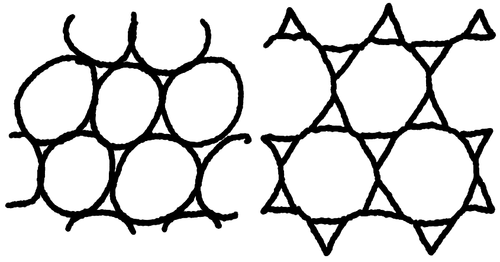Property 5 — Positive Space
Positive Space is introduced in
We must introduce positive space when we develop for a while and the foreground becomes much stronger than the backdrop. We don’t always need to weaken what we have done to remedy the situation. Positive space means to look at the gaps our work has created and see where they are awkward or need some support. You can think about positive space as relating to kerning. It does not matter how good the letterforms are without good spacing between characters. Poorly kerned text looks odd.
 Times New Roman, kerned properly above but not below.
Times New Roman, kerned properly above but not below.
When something unfolds, it does so within some other medium or environment. The change introduced by its presence can help or harm. The concept of positive space suggests the best results are when the unfolding also considers the goodness of the negative space. So, the patch of ground left behind by the placement of buildings must be good as well. The shape of the empty air around an object should be as inviting as that displacing it.
We find examples of how this can be done well in the placement of buildings around a cosy village green or in a nicely designed shopping mall. The place to which people go when they are not shopping is as important as the shops to the feeling of it being a good place. In an image, we see it in how the object of the picture leaves a pleasingly shaped gap around it.
Some shapes seem like they should have good form (as we shall see in the following property) but have a tough time providing positive space. Circles are notorious for this[NoO1-01]; the lack of positive space is the reason organic shapes in buildings seem alien compared to squared-off corners and straight lines. Rounded shapes always leave a problematic concavity in the space they take up. Modern buildings with circular structures will have line-of-sight problems or unused space issues. Even the aforementioned circle-packing from alternating repetition sees this problem, as the spaces between circles have an extremely concave nature. To resolve this, we blow out the spaces in some way to make them better centres.
 Gaps between circles have terrible shape, so open them up to solid triangles.
Gaps between circles have terrible shape, so open them up to solid triangles.
Circle packing is all about the circles. The gaps look like the leftover cardboard from punching out the tokens of a board game. They are waste. They are unusable. Without positive space, elements stick out, causing others to recede or weaken. The overall compound is reduced. The form as a whole is less effective for the sake of something that does not respect its neighbours.